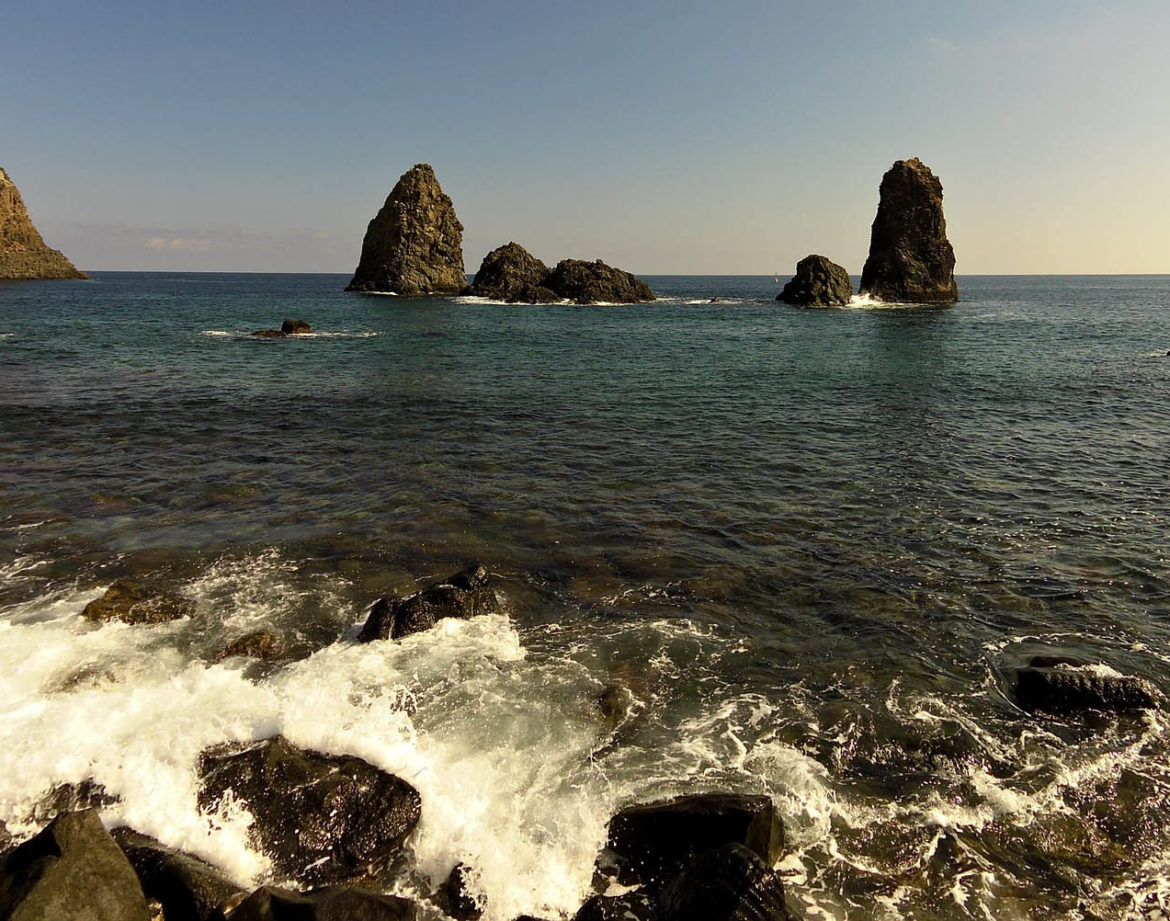Aci Trezza and Aci Catena, along the Catania coast
The territory of Catania is home to some very interesting places, which over time have become real tourist destinations. Aci Trezza (fraction of the municipality of Aci Castello) and the municipality of Aci Catena belong to this category.
The history of these two places
First of all, it is appropriate to clarify why many places in the Catania area have a name that begins with “Aci”. All this is due to a famous myth, told by peta Ovidio. The story has as its protagonist the shepherd Aci, who fell in love with the nymph Galatea (in turn loved by Polyphemus). The Cyclops, blinded by jealousy, killed Aci and his blood gave life to the river of the same name that bathes the area where today, among others, Aci Trezza and Aci Catena are present.
Aci Trezza was officially born in the seventeenth century at the behest of Stefano Riggio, former owner of the city of Aci Sant’Antonio e Filippo. Initially it was born as a maritime port of the Riggio principality, and then became an important commercial center of the area. After the end of the Riggio dynasty, the town experienced a period of decline. After a series of internal revolts, on 15 September 1828 the King of the Two Sicilies Francis I issued a decree sanctioning the separation between Aci San Filippo and Catena and Aci Trezza and the coupling between the latter and Aci Castello. A story that, as for other almost homonymous territories, goes hand in hand with that of Aci Catena.
Places to visit
If you intend to visit Aci Trezza, an obligatory stop undoubtedly coincides with its stacks (also known as the Cyclops islands). It is a small archipelago that was formed about half a million years ago due to intense volcanic activity. However, legend has it that the stacks are actually the stones thrown by the Cyclops Polyphemus against Ulysses on the run (hence the name Isole dei Ciclopi).
The largest of the archipelago is Lachea Island, where important archaeological discoveries have been made. In 1869 an ax from the prehistoric era was found, while in the course of other excavations objects dating back to the late Roman era were found. This island, in terms of flora, is home to endemic plants from Sicily and southern Italy such as the heliotrope and the golden ray carlina. As a fauna, however, the lizard of the subspecies Podarcis siculus ciclopica has been sighted only on this island. There are also many birds such asthe yellow wagtail, the Sardinian flounder, the magpie, the cormorant, the herring gull, the marsh harrier and the peregrine falcon.
The Cyclops Islands are also served as a backdrop in Giovanni Verga’s literary masterpiece, I Malavoglia. They were also the film set of the film La terra trema by Luchino Visconti, awarded at the Venice Film Festival in 1948.
In addition to admiring the Cyclops islands, it is advisable to visit the various religious buildings of Aci Trezza. Above all the main one, namely the Church of San Giovanni Battista. Rebuilt after the earthquake of 11 January 1693. It was enlarged and embellished in the following centuries. The façade is in Baroque style with a classical portal, above which there are two bell cells. At the end of the minor nave there is an altar with the crucifix flanked by the statues of Maria Addolorata and John the Evangelist.
Also interesting is the Torre dei Faraglioni, the only surviving tower of the defensive system built by the Princes of Aci to protect the city of Aci Trezza. It served to defend the port and the water space between it and the stacks. Built on two floors not communicating with each other, it was erected on a previous building whose base rests on Roman or Byzantine ruins.
As for Aci Catena, the places that deserve to be visited are the Hermitage of Sant’Anna (religious complex from the mid-eighteenth century), the archaeological area of Santa Veneraal Pozzo and the water mills.
What and where to eat
The cuisine of Aci Trezza and Aci Catena is linked to the sea and the fishing tradition. Some typical dishes have anchovies as a basic ingredient; they are used as a condiment for pasta or eaten in salt. Other typical traditional dishes are red tuna and sardines a beccafico. Furthermore, it is said that Aci Trezza is the home of ice cream and granitas (invented by the chef Francesco Procopio dei Coltelli).
Some restaurants in Aci Trezza to try are Il Moro di Trezza, Osteria dei Marinai and Il Covo Marino. For Aci the chain, on the other hand, is Blu Panorama, Trattoria U Puttusu and All’Antica Osteria.
The Riviera of the Cyclops
Speaking of the coasts of the area it is obvious to mention the Riviera dei Ciclopi, a stretch of coast along 12 kilometers that goes from Acireale to Aci Castello. In correspondence with Aci Trezza you can admire the stacks of the Cyclops and explore spectacular sea beds.


Comment (0)